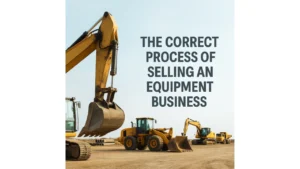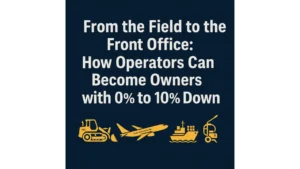The GSA’s BEST Program has opened a rare door into the world of tactical aviation. The ability to acquire a UH-60 Black Hawk a platform once reserved for military use has captured the attention of private operators, capital groups, and aviation entrepreneurs.
But what the auction doesn’t show is what comes next.
The real opportunity is not in the ownership. It’s in the strategy behind it.
Because the UH-60 isn’t just a helicopter. It’s a vault of monetizable assets if you know how to unlock it.
And the key, in many cases, is having the right partnership with a certified 145 MRO shop.
What’s Inside: The Hidden Value of a UH-60
Break down a UH-60 and you’ll find individually valuable components — each with its own resale channel and demand curve. When overhauled and tagged by a certified 145 MRO, these assets can generate a return that often exceeds the original acquisition price.
Main Rotor Blades (x4) Estimated Value: $80K–$120K each Why It Matters: Long lead times, mission-critical replacements for many operators
Main Transmission Estimated Value: $200K–$350K Why It Matters: Central to flight systems, constant demand, frequent failure point
Intermediate Gearbox Estimated Value: $45K–$70K Why It Matters: Typically sold in pairs, strong export market
Tail Rotor Gearbox Estimated Value: $40K–$60K Why It Matters: Compact, high turnover item
T700 Engines (if included) Estimated Value: $600K–$1.2M each Why It Matters: Most valuable component if hours are favorable; overhaul converts liability into major asset
Avionics Package Estimated Value: $150K–$250K Why It Matters: Especially valuable for export or SAR conversions
Landing Gear Assemblies Estimated Value: $30K–$50K (per strut) Why It Matters: Commonly replaced due to load wear and fatigue
Hydraulic Systems Estimated Value: $25K–$40K Why It Matters: Vital to every mission profile, often fail pre-overhaul
Fuel Cells Estimated Value: $10K–$30K Why It Matters: Frequently swapped; ideal for stocking or flipping
Electrical Harness Sets Estimated Value: $20K–$40K Why It Matters: FAA-tagged harnesses move quickly in MRO networks
These values reflect properly overhauled and documented components. Parting out without certification not only lowers market value — it creates exposure and limits your ability to sell into qualified channels.
Why the MRO Relationship Is Essential
What separates profitable operators from stalled owners is often one thing. A structured relationship with a certified MRO facility.
That relationship unlocks several critical advantages:
Certified teardown, not informal disassembly Every part is removed, inspected, and tagged with traceability. Without that, resale options shrink fast.
Logistical coordination Timelines matter. With a structured process, storage, transport, and staging can follow a clear path from acquisition to revenue.
Pre-sale strategy Parts can be mapped, priced, and lined up for sale before the first bolt is turned. There is no guesswork only execution.
Scalability Once the system is built around the MRO process, the model becomes repeatable across multiple aircraft. One helicopter becomes ten. One cycle becomes a supply chain.
The Mistake Most Buyers Make
The mistake isn’t in buying the helicopter. It’s in thinking that ownership alone unlocks value.
Without a certified teardown strategy in place, buyers risk:
• Leaving parts uncertified and unsellable • Holding assets with no commercial pathway • Waiting on FAA approvals without support • Tying up capital in idle components
The buyer thought they acquired a helicopter. What they really bought was a dormant inventory because they lacked the infrastructure to activate it.
And in this market, where UH-60 supply is limited and demand is increasing, time is not on your side.
The UH-60 as a Platform, Not a Product
The BEST Program won’t tell you this, but here’s the truth:
The UH-60 is not one asset. It’s a series of high-value systems waiting to be activated, monetized, or redeployed.
When structured correctly, the aircraft becomes more than a one-time purchase. It becomes a business unit.
A certified MRO transforms the acquisition from a liability into a fluid inventory operation — one that can be replicated, scaled, and reinvested into.
This is how real operators approach the helicopter.
Not as a trophy. As a revenue map.
Final Thought
If you are stepping into this space, understand what you’re really acquiring.
The value isn’t in the helicopter. It’s in the infrastructure that surrounds it. And in your ability to turn complexity into control.
The airframe is the container. The components inside are the asset.
Without the right strategy, what you own is potential. With it, what you own is cash flow.
Gustavo Lopez
DM me or visit www.strategicsolvers.com to connect.
#UH60#AviationAssets #HelicopterInvesting #MROstrategy #DefenseLogistics #CapitalDeployment #StrategicSolvers #Verticon






